Introduction
In today's fast-paced business landscape, organizations must embrace DevOps as a transformative process to improve collaboration between development and operations teams. This article outlines eight essential steps for a successful DevOps transformation. By assessing the current state of workflows, defining goals and objectives, building cross-functional teams, implementing continuous integration and deployment, adopting Agile methodologies, integrating DevOps tools and technologies, monitoring and measuring performance, and continuously improving and iterating, businesses can enhance productivity, deliver high-quality software, and drive growth.
These steps, backed by industry case studies and expert insights, provide a comprehensive guide to achieving a successful DevOps transformation.
Step 1: Assess Current State
Initiating a DevOps transformation requires introspection to grasp the present condition of your organizational workflows. By assessing the state of your current development and operations, you can shine a light on the prevalent bottlenecks and inefficiencies impeding productivity. It becomes clearer where your company stands and which targets are attainable through this metamorphosis.
Retail giants in Chile, for instance, dealt with rapid staffing growth which ultimately complicated their capacity to maintain and improve processes. Similarly, Vodafone's shift towards cloud architecture resulted in remarkable efficiencies, reducing a large-scale product launch workload from twenty IT professionals to just five. Moreover, TBC Bank in Georgia illustrates the complexities faced during daily operations due to technical debt and team interdependencies.
Organizations often discover that their technical and operational framework riddled with silos slows down the delivery process. DevOps emerges as the beacon for such challenges, calling for a blend of collaborative efforts and automation to join the separate entities of development and operations. This paradigm shift not only accelerates delivery but also enriches the quality of the end product, ultimately enhancing job satisfaction for those involved.
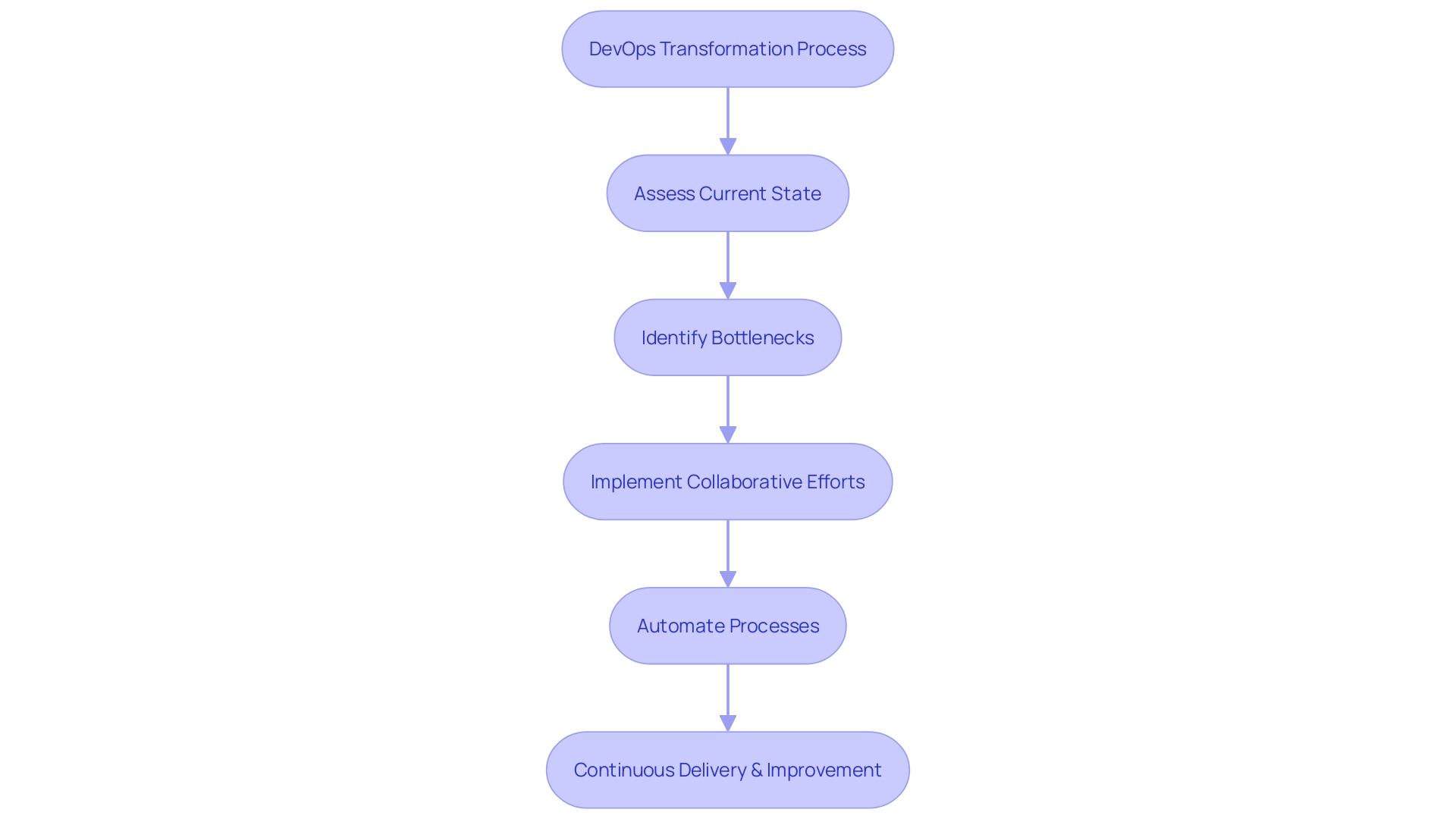
Step 2: Define Goals and Objectives
For a successful DevOps transformation, it is essential to adopt a metrics-driven approach. This involves defining specific, quantifiable outcomes that align closely with your enterprise goals. Examples of these outcomes may include reducing software deployment cycles, increasing deployment frequencies, or enhancing system reliability and stability.
Engaging in such a strategic approach not only aligns with organizational objectives but also fosters an environment of continuous improvement. Consider the large retailer in Chile, which faced talent retention challenges amidst rapid growth. They acknowledged the necessity to establish a dedicated Talent area within their technical division to attract and maintain a skilled workforce, thereby upholding their aspiration to become the tech employer of choice in the region.
Similarly, Bosch's foray into sustainable energy solutions is characterized by its innovative SOFC systems, which leverage digital twins for process optimization over the product's lifespan—aptly demonstrating how clear, outcome-focused strategies can revolutionize an enterprise. Within the dynamic context of Vodafone, we see how adopting cloud architecture has not only streamlined customer interactions but also dramatically improved engineers' work experiences, exemplifying the profound impact of strategic DevOps initiatives. Moreover, as digital transformation, customer experience enhancement, productivity boosts, and cost savings are prioritized, per the IDC study, organizations are tasked with formulating attainable and relevant business outcomes that resonate with their infrastructure decisions.
It's worth noting, however, that less than 50% of firms have embraced foundational engineering practices like DevOps, according to Forrester's insights. Thus, setting clear goals informed by key metrics like lead time for changes, and mean time to recovery, as elucidated by the DORA team's research, can markedly augment engineering effectiveness and ultimately bear on an organization's strategic success.

Step 3: Build a Cross-Functional Team
In the modern ecosystem of software development, DevOps is no longer a mere suggestion but a pivotal factor. It represents the symbiosis between development and operations teams that once remained segregated. Drawing on case studies from dominant industry players like Chile's premier retail conglomerate and the UK’s homeware retail giant, Dunelm Group, the benefits of a DevOps approach stand out.
These organizations emphasized the necessity of transitioning to a cross-functional team structure to tackle the complexities of growth in an agile and responsive manner.
Revisiting the ethos pioneered by Patrick Dubois, creator of the term 'DevOps', we replicate his vision—'We build it, we run it,' ensuring collective accountability from conception to deployment, and even when problems arise at the least opportune moments. The core of DevOps is a cultural shift; it's about embedding a philosophy that weaves together the various threads of software development into a cohesive tapestry—embracing automation and continuous integration for a seamless development lifecycle.
Statistically speaking, an effective DevOps team—like the formidable tech division of over 1,000 employees in Chile’s retail titan—reduces post-production errors considerably, leading to a stable workplace that thrives even amidst rapid scaling. The aim is to march towards a future where companies are destinations of choice for top talent by fostering an environment that prioritizes swift, high-quality deliverables over counterproductive work practices.
Patrick Debois' insights resonate strongly here, as DevOps is not a standalone solution sold through tools or platforms. Instead, it’s a nuanced confluence of patterns, frameworks, and mechanisms that have been battle-tested and iterated upon. The richness of DevOps lies in the cultural, procedural, and tooling aspects that organizations must harmonize.
Thus, we assemble a cross-functional team that stands united, with a mindset that champions interaction and shared responsibility across the full spectrum of development and operations—truly reflecting the original agile intention.
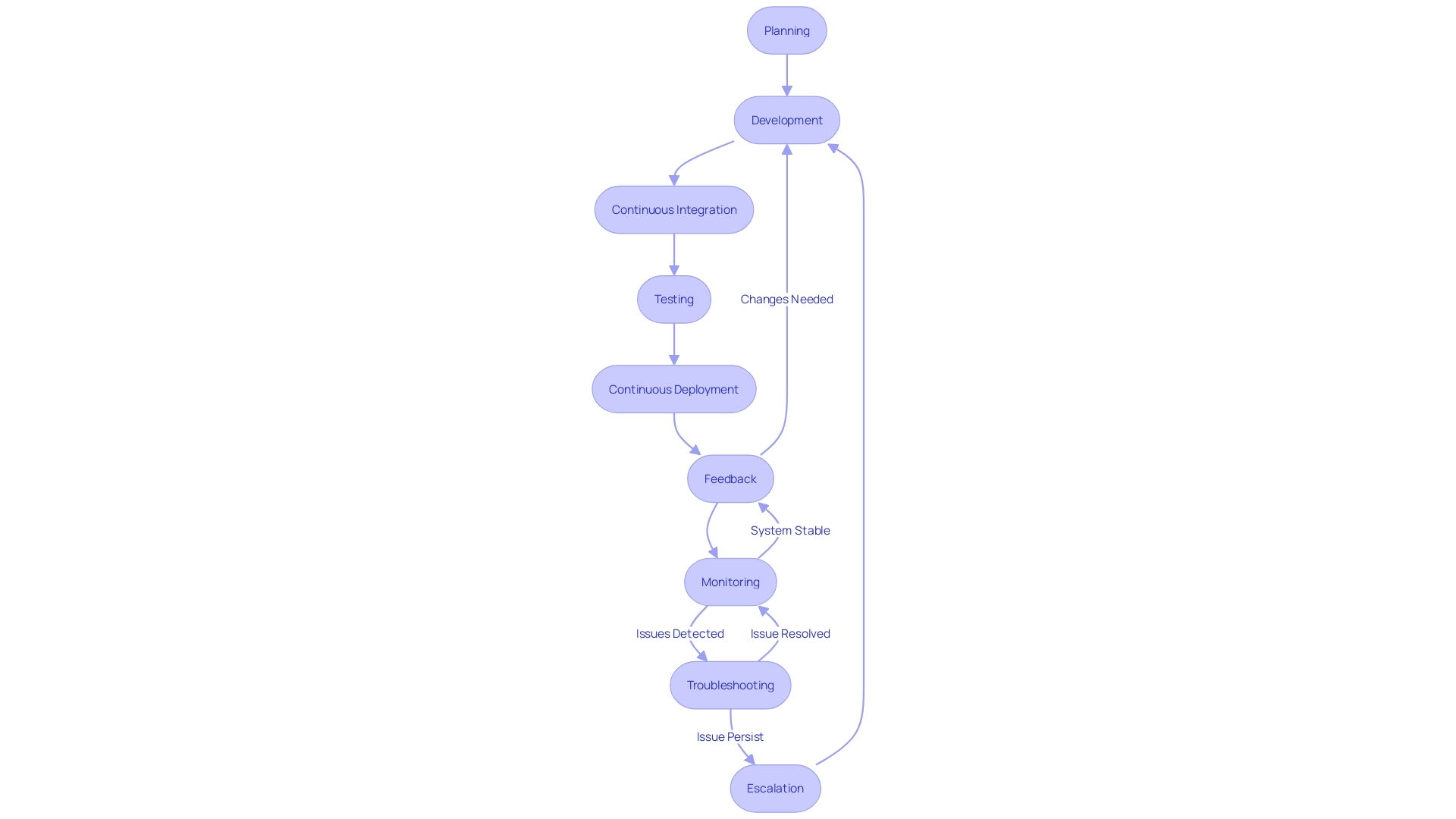
Step 4: Implement Continuous Integration and Continuous Deployment (CI/CD)
Integrating Continuous Integration (CI) and Continuous Deployment (CD) deeply into the fabric of DevOps practices is more than just a trend; it's a transformative process reshaping how software is delivered. To extract the full value from CI/CD, it's essential to think of it as the CI/CD flywheel—a complete lifecycle from identifying customer needs to successfully deploying a feature that addresses those needs. By embracing CI/CD, you're not just improving efficiency; you're also crafting a more robust and error-resistant pipeline that enhances the overall quality of your software.
CI represents a paradigm shift in development, allowing for frequent merging of code into a shared repository. This shift isn't just about speed—it's about establishing a consistent working state of the project, facilitating early detection of integration issues. Meanwhile, CD automates the deployment process, ensuring that your software can be reliably released at any time with minimal human intervention, reflecting the growing industry trend towards automated software development processes.
Despite the clear benefits of this approach, it's clear that the software development community still faces challenges in adopting frequent release cycles. A recent CD Foundation survey indicates a stagnation in release frequencies—with only 29% of respondents deploying weekly or more often, and a notable 40% taking over a month. Moreover, the speed of addressing production issues doesn't exhibit significant improvement over the last four years, potentially highlighting a lack of maturity in testing and deployment automation practices.
This maturity is paramount in continuous deployment, distinguishing itself from traditional, manual deployment paradigms. With CD, each codebase change undergoes automated testing, and if successful, is immediately transferred to production. Here, the transformational aspect of CD is evident—it's not merely a strategy but a continuous journey towards deploying high-quality software that immediately provides value to users.
For software developers transitioning from traditional methods like direct deployments into directories like /var/www/html on development servers, learning the CI/CD process is vital. In modern programming languages like Java or .NET, building executable files from code previews this automation-centric approach, underscoring the industry shift noted by insiders such as Chris Alcock.
For organizations and development teams, the journey towards effectively adopting CI/CD models can be a complex one. Yet, projects like Radius by the Cloud Native Computing Foundation (CNCF)suggest an ecosystem committed to simplifying cloud application complexities, validating the movement towards automated and refined software deployment strategies.
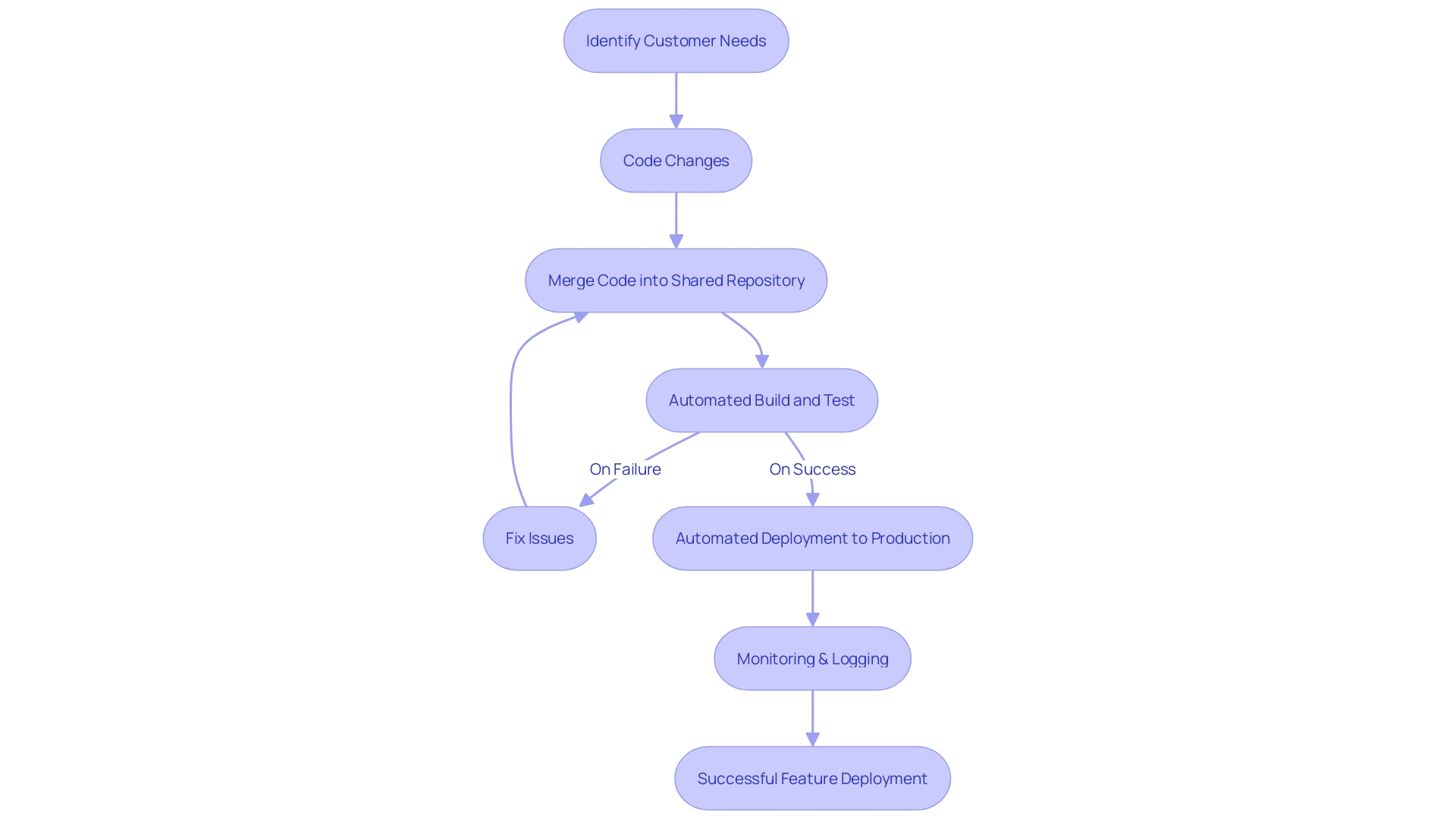
Step 5: Adopt Agile Methodologies
Agile methodologies go far beyond basic project management. They embody a culture of adaptability and foster an environment where your development and operations teams can thrive on collaboration and transparency. By breaking down work into prioritized, manageable tasks, your team can iterate more efficiently and respond swiftly to changing requirements, delivering incremental value through each cycle.
Applying Agile is akin to construction with Lego blocks—instead of adhering to a fixed, upfront blueprint, each block represents a small, tangible piece of the overall project that can be adjusted and reconfigured as insights and circumstances evolve. This iterative approach is grounded in four key principles: valuing individuals and interactions, working software, customer collaboration, and welcoming change.
Consider the striking findings from a global study with 127 companies: while 94% initiated Agile practices, only 53% effectively achieved transformation, indicating that true agility isn't just about adopting methodologies—it's about realizing transformational outcomes and creating enduring changes in team culture and operations. These successful organizations experienced marked improvements, from a 15% to 20% reduction in delivery costs to a two-fold increase in total shareholder return.
An example of Agile's real-world impact is the forward-thinking approach of the electric vehicle company Rivian, which embraced Agile to meet ambitious sustainability goals, showing that Agile can drive both technological and environmental advancements.
Moreover, clarity in project requirements before development has been shown to dramatically enhance success rates. With documented specifications set in advance, projects are 97% more likely to achieve their objectives, underscoring the profound influence of comprehensive planning combined with Agile's flexibility.
Ultimately, embracing Agile is not simply about methodology; it's a strategic choice that offers organizations the benefits of enhanced product quality, expedited time to market, and increased employee satisfaction, all leading to substantial growth opportunities in today's fast-paced enterprise landscape.
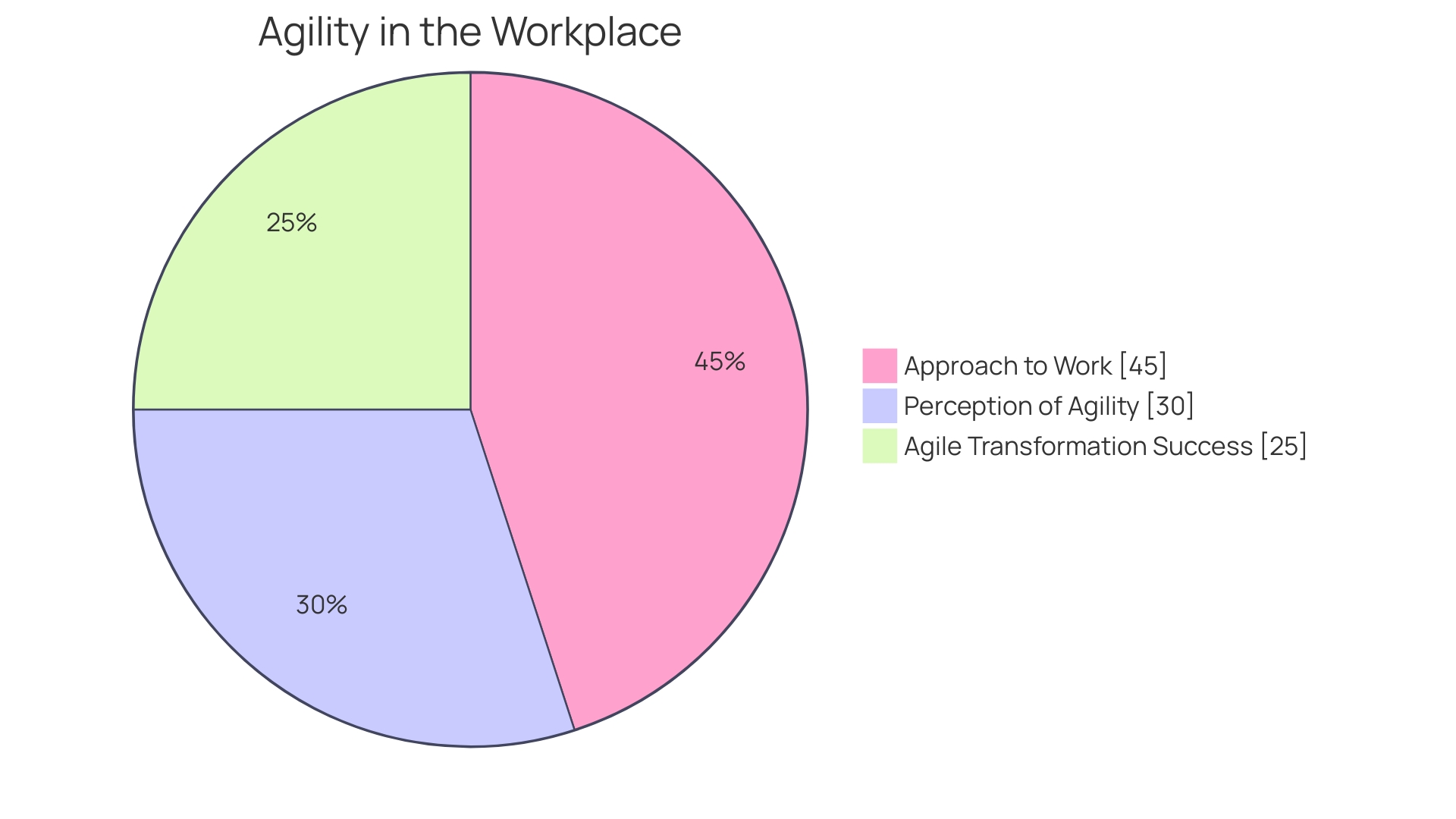
Step 6: Integrate DevOps Tools and Technologies
To thrive in today's competitive landscape, embracing DevOps is imperative for businesses seeking to improve the collaboration between development and operations teams. As organizations strive to accelerate their delivery cadence and minimize post-production errors, integrating the right set of tools within the DevOps ecosystem becomes crucial. A robust version control system, like Git, is indispensable for managing codebases across multiple developers without conflicts.
Effective configuration management tools, highlighted by solutions such as Chef, can manage complexity and facilitate infrastructure as code, leading to an environment where automation takes precedence over manual intervention. Moreover, monitoring systems are vital in maintaining the health of services in production, allowing for real-time visualization and process adjustments. These technologies, underpinned by cloud platforms, ensure that scalability and flexibility are at the forefront of an organization's operational capabilities.
Such a comprehensive toolkit ensures a harmonious DevOps culture, mitigating stress related to new releases and enhancing overall productivity.

Step 7: Monitor and Measure Performance
To ensure that your DevOps initiatives yield the desired outcomes, it's imperative to embrace observability as a core tenet. Observability isn't just advanced monitoring; it's a comprehensive approach to track the systemic health of your software development life cycle (SDLC), providing insights into not only what issues are occurring but also why they're happening. By leveraging tools that scrutinize the signals from your applications, services, and infrastructure, you can rapidly identify issues, pinpoint their origins, and implement effective solutions.
Crucially, the data-centric nature of observability empowers you to move beyond traditional KPIs and delve into qualitative metrics that offer a deeper understanding of developer productivity and customer satisfaction. For instance, measuring Customer Lifetime Value (CLV) shifts the focus to long-term relationships rather than short-term interactions, providing a more nuanced picture of your software's impact.
In light of the fiscal constraints and rapid technological advancements dominating the business landscape, it's time to reject the myth that developer productivity is unfathomable. As elucidated by experts in the field, having a grasp on qualitative metrics and making data-informed decisions is not just feasible, but paramount for continuous improvement and success. Engage with the intricacies of observability to refine your DevOps practices and foster an environment where software excellence thrives.
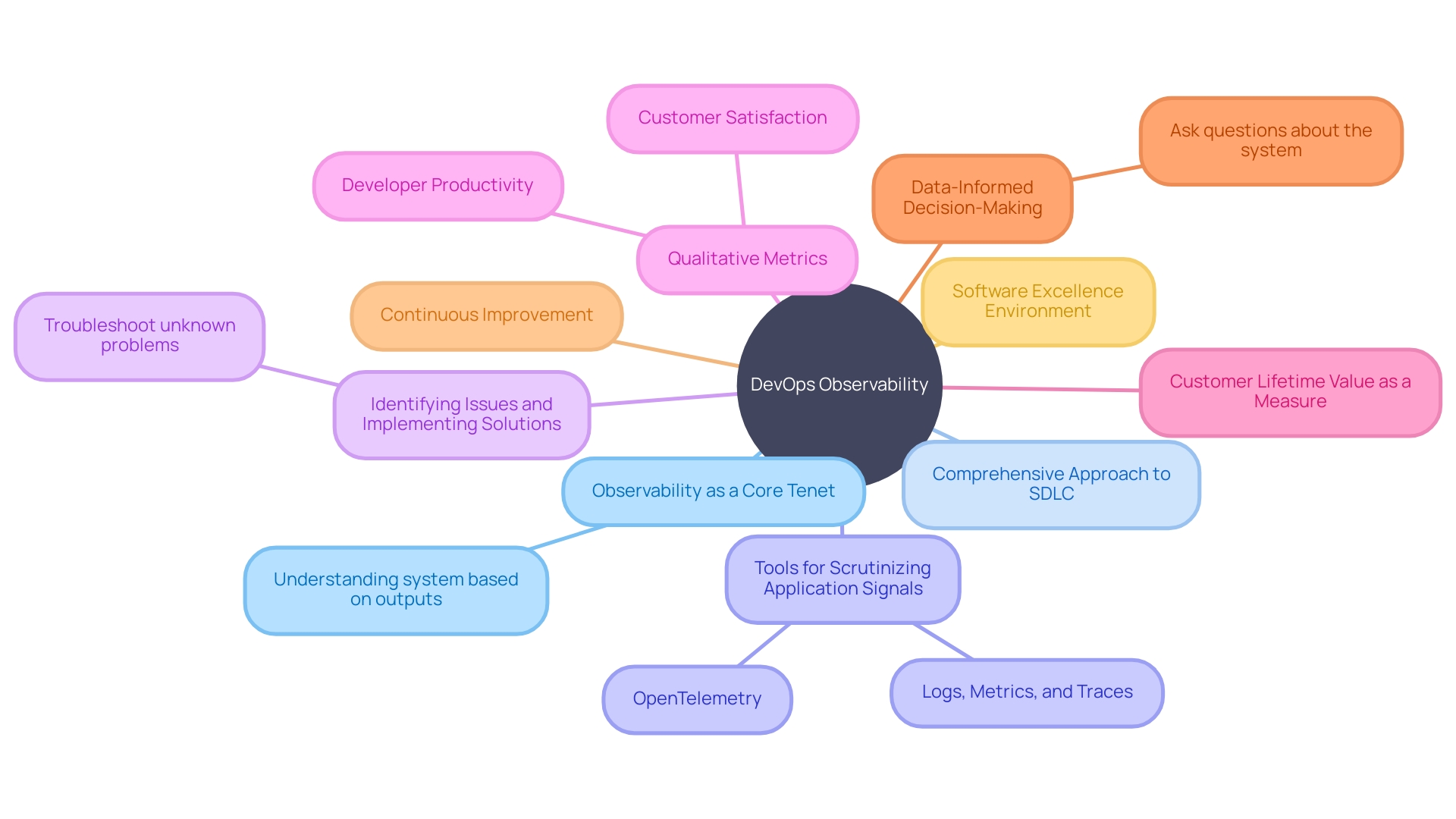
Step 8: Continuously Improve and Iterate
Conscientiously fostering a DevOps culture within an organization transcends simple process enhancements; it necessitates an environment where learning and innovation are esteemed. This involves inviting teams to appraise their work strategies critically, leveraging feedback to uncover areas ripe for advancement, and championing an ethos where continuous improvement is pursued with vigor. Empowering teams with the tools and support needed to explore inventive solutions is crucial in maintaining the dynamism of a successful DevOps transformation.
Embracing Chaos Engineering epitomizes this boundless pursuit of excellence. Rather than courting chaos, it strategically introduces disorder within controlled contexts to verify and fortify the robustness of systems in tumultuous conditions. The notion underscores a scientific approach, hypothesizing how applications might endure specific events like faults or heavy load scenarios.
Through simulation of such events and observation, the hypothesis is tested, enhancing the resilience of applications. As companies evolve, like one transitioning from a manual, cumbersome code deployment process to a cohesive, automated pipeline crafted for both efficiency and a delightful developer experience, the principles of continuous improvement guide this journey.
Recent initiatives in software tooling demonstrate an industry grappling with complexity, as illustrated by the early-stage Radius project seeking membership in the Cloud Native Computing Foundation (CNCF). This highlights the ongoing efforts to abstract and simplify the orchestration of applications and infrastructure, addressing Kubernetes' innate complexities. Such advancements reiterate the importance of documentation and prioritizing user feedback and needs in fostering productive DevOps practices.
Indeed, DevOps is the backbone of businesses in this technological age. The compelling 2023 State of DevOps Report spotlights the paramount role of documentation and the enhancements cloud computing brings to productivity and satisfaction. While technology continuously evolves, presenting both challenges and opportunities, a resolute commitment to optimizing the developer experience is key, as it not only supports the creation of high-quality applications, but does so in ways that are viable and prioritizes well-being, thus ensuring sustainable achievement and innovation.
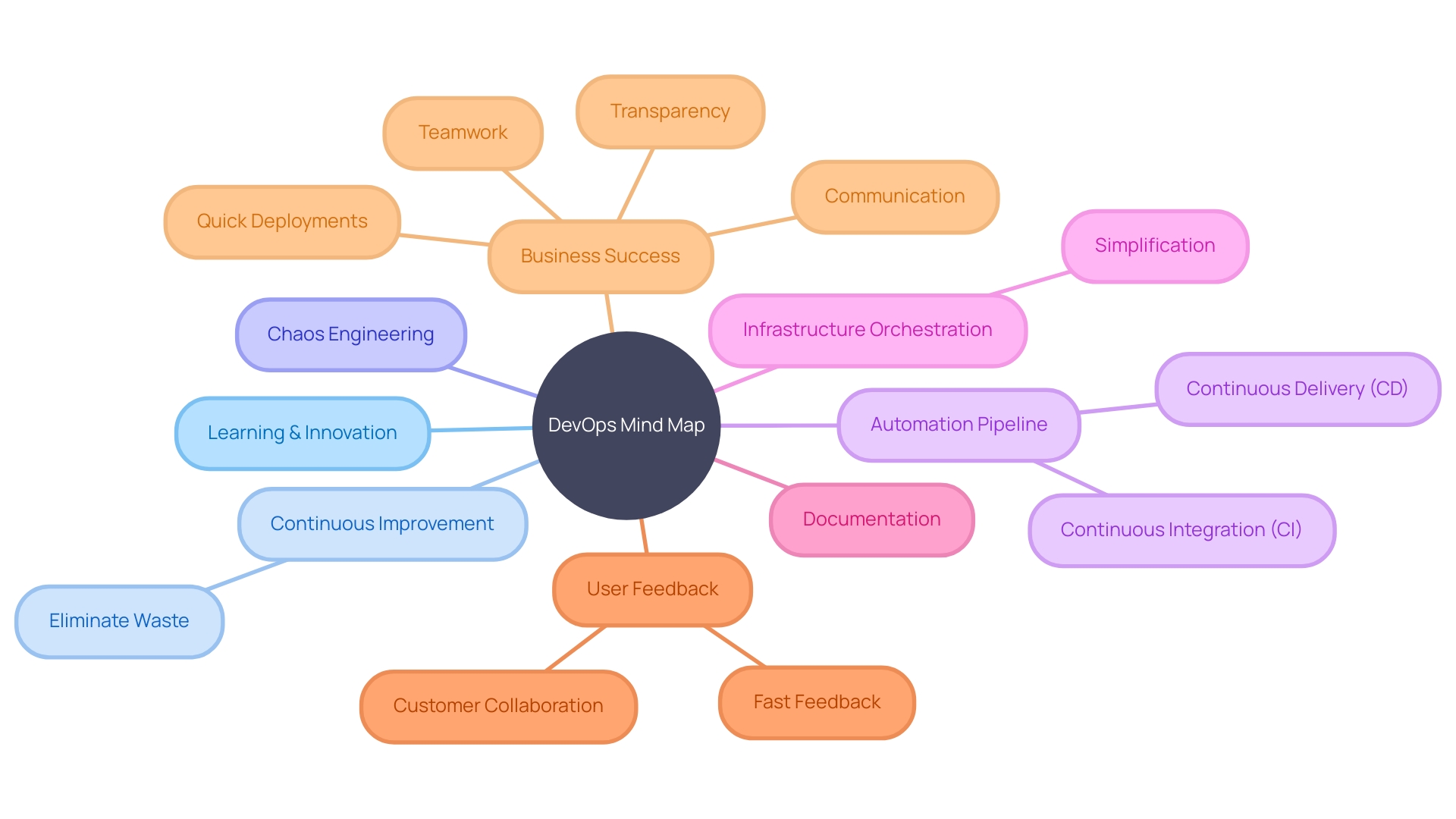
Conclusion
In conclusion, a successful DevOps transformation involves assessing workflows, defining goals, building cross-functional teams, integrating CI/CD, adopting Agile methodologies, leveraging the right tools, monitoring performance, and embracing continuous improvement.
By assessing current workflows, organizations can identify bottlenecks and inefficiencies. Defining goals and aligning metrics fosters a culture of continuous improvement. Building cross-functional teams enhances collaboration and accelerates delivery.
Integrating CI/CD automates processes and improves software quality. Adopting Agile methodologies enables efficient iteration and responsiveness to changing requirements. Integrating the right tools enhances collaboration and accelerates delivery.
Monitoring performance through observability enables data-driven decisions and fosters continuous improvement. Finally, embracing continuous improvement and innovation drives success in a DevOps transformation.
In summary, a successful DevOps transformation requires a strategic approach, collaboration, automation, and a commitment to continuous improvement. By following the essential steps outlined in this article, organizations can achieve enhanced productivity, deliver high-quality software, and drive growth in today's fast-paced business landscape.





